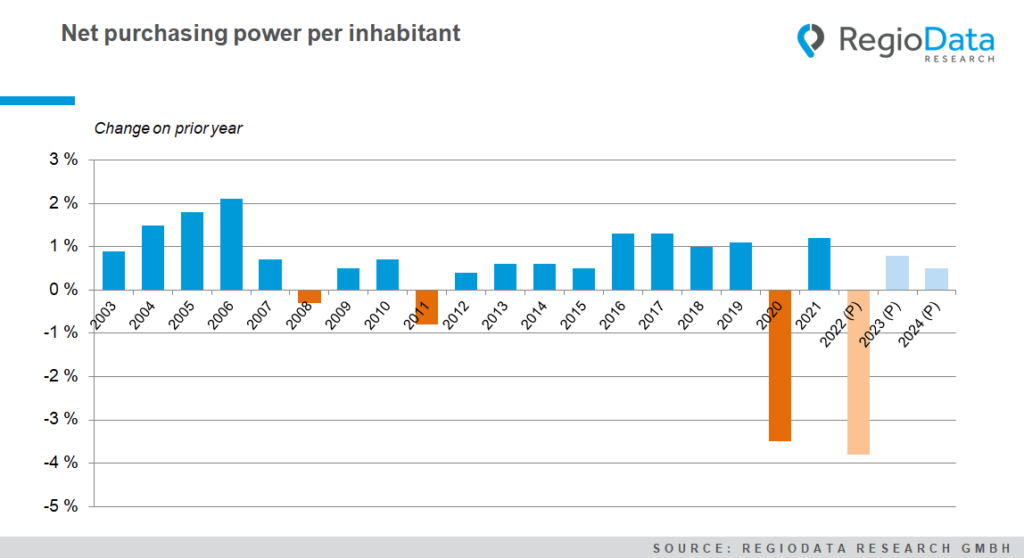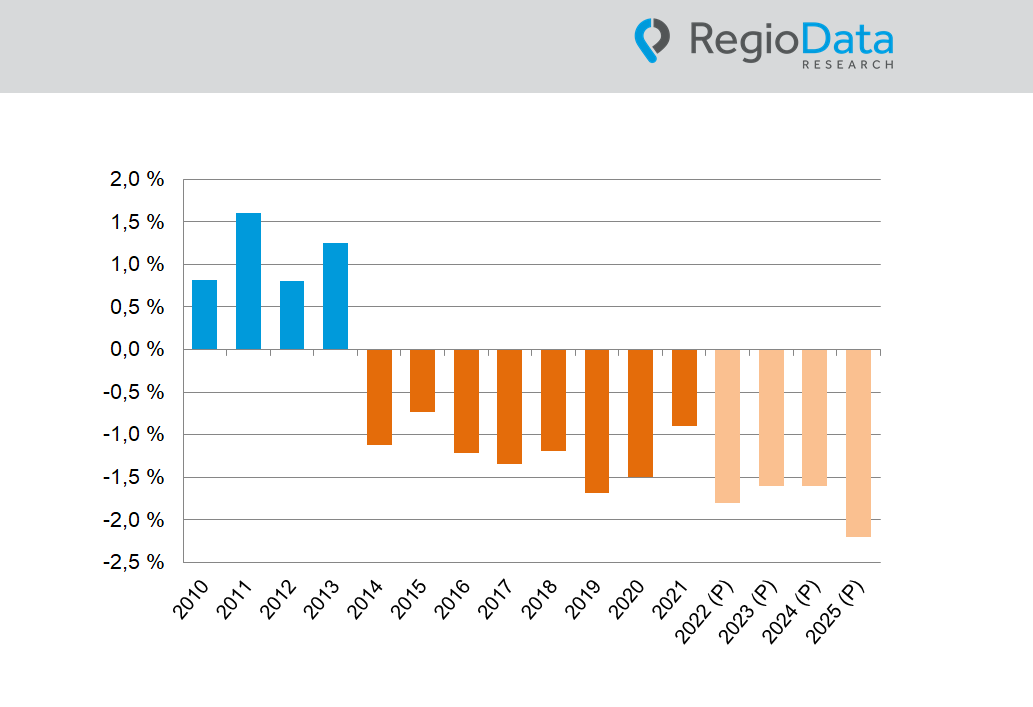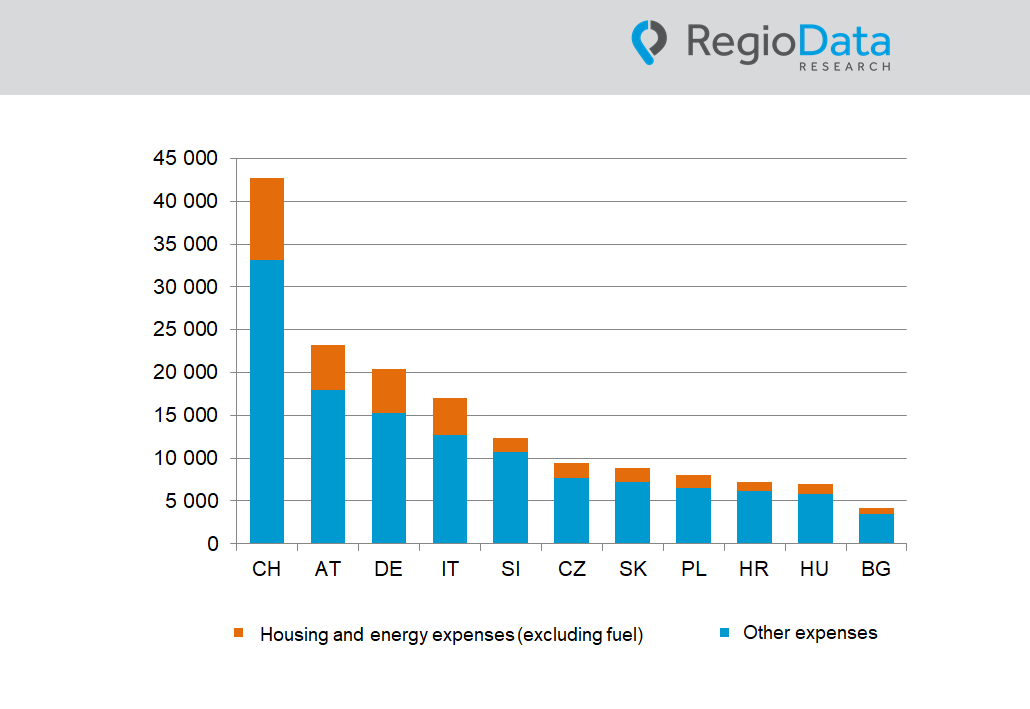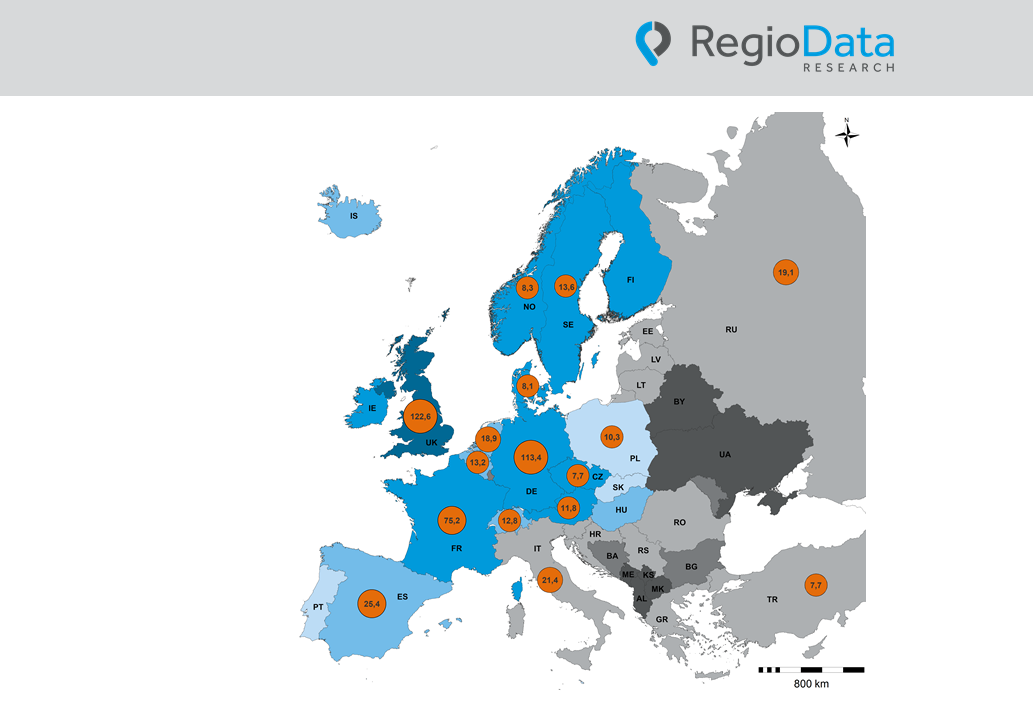Austria
Loss of purchasing power - light at the end of the tunnel?
The purchasing power roller coaster is picking up speed again: After Austrian purchasing power consolidated for the first time in 2021, only to reach a new low in the following year, it is expected to rise again in 2023.
New national record for purchasing power deficit
In 2021, Austrians held an average purchasing power of € 23,191 per capita and year. In real terms, this corresponds to a year-on-year increase of 1.2%. But that was not meant to be the end of the story: After a year of mild purchasing power growth in 2021, Russia invaded its neighbouring country, exposing Europe to energy shortages. The result was a massive increase in inflation, which also affected Austria, thus a net loss of purchasing power of probably 3.9% on average – a peak not seen in Austria for many decades.
(Purchasing power defines as the sum of all types of income, i.e. dependent income, independent income, capital assets, rent, agriculture, pensions, transfer payments, subsidies, etc.). Compulsory contributions, i.e. taxes and social security contributions are deducted from this total. Purchasing power thus refers to freely disposable income).
Corona and war torpedo Austrian purchasing power development
Due to the fight against the pandemic and the Russian invasion a few hundred kilometres away from Austria, the previously calm and constant development of purchasing power in Austria has undergone dramatic changes – to the downside.
In the past 20 years, there have only been two declines in purchasing power, and they were a pittance compared to today. In 2008, purchasing power fell by 0.3% due to the global real estate and financial crisis, and in 2011 it fell again by 0.8% for the very same reason, because Austrians had to bail out the systemically important banks.
At that time, Austria got off relatively lightly compared to other European countries, such as Spain or Portugal, but not in combating the pandemic, where other countries fared much better, mainly because they were less dependent on tourism.
Civil servant positions were largely spared
For the average Austrian, the closures and other inconveniences meant a loss of purchasing power of 3.6% on average, with the decline varying considerably depending on the occupational group. While many civil servants, for example, were enjoying the usual salary increases, tourism businesses, restaurants, artists, and many other self-employed people were on the brink of the abyss.
As a result of the economic upheavals, income from rentals and capital assets also fell. Although state aid was granted in some cases, the overall outcome was a massive loss of purchasing power by Austrian standards.
Slight increases for 2023
But what will happen next? We can currently expect purchasing power to increase by around 1% in 2023, as has been the case for many years, and this trend will likely continue in 2024. However, the Russia-Ukraine war remains a massive factor of uncertainty.
The currently positive assessment can be justified by the “normally” high wage settlements and pensions for 2022, although inflation has skyrocketed due to external factors, which means a loss of purchasing power for 2022, partly as other types of income, such as income from capital assets, have not risen either due to the low-interest rate level and the weakening stock markets.
For 2023, however, significantly higher wage and pension settlements are expected or have already been agreed upon, in some cases up to 10% year-on-year. Inflation in the meantime, and all national and international research institutes agree on this, will drop significantly again. Global energy markets also appear to be settling down again. Natural gas, for example, currently costs about the same on the stock market as it did 15 years ago. Overall, this ultimately results in an expected increase in purchasing power, which also appears sustainable.
Not to be forgotten are the government support measures, such as the cost-of-living adjustment and the energy bonus, which amount to a total of around €7.2 billion in 2022 and around €8.4 billion in 2023 – that is an average of over €900 per inhabitant next year. So cautious optimism is definitely in order!
Share post




